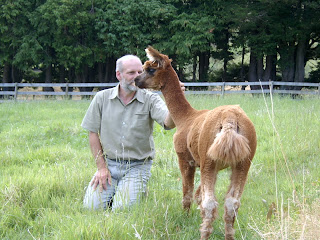We have upgraded our presence at the Sunday market as from last Sunday. We've added proper branding to our market stall, making it easier for the public to identify what we have on offer.
Because the farm is still not producing saleable product year round we are always looking for complimentary products to add to our line up. We have just added a new product to our line up that is going very well for us. They are called
SoapNuts and are a natural alternative to using chemical based soap powders.
SoapNuts grow on the
Sapindus tree that is native to Northern India and Nepal. The fruit of this tree contains natural
saponin which is nature's form of soap. In fact the word 'soap' is derived from
saponin. In the days when people made soap from fats, oils and wood ash most
everybody knew that the chemical reaction that took place when you mixed the oils with the alkali (wood ash) was called
saponification. It's easy to see where the name for that reaction came from. Those soaps of old were gentle mild soaps that rarely caused skin problems.
Modern soaps, such as those you buy in your supermarket, are made mostly from artificial compounds and, unsurprisingly, many people have skin reactions when they use these soaps. The same is true of laundry powders. How many of you have noticed skin rashes, itchiness, or allergic reactions after putting on your freshly washed clothes? The reason for that is simply that your clothes come out of your washing machine laden with chemical residues from the soap powders, the whiteners, and the fabric softeners the marketing gurus tell us we should use.
SoapNuts contain only natural
saponin and leave your clothes clean, fresh, and naturally soft. Aside from the obvious benefits of not dumping large quantities of residual chemicals into the waste water stream, nor leaving chemical residues in your clothes,
SoapNuts are also extremely economical to use. $15 of
SoapNuts lasts us almost a whole year.
Anyway, I'm not trying to sell you any because you all live on the other side of the world from me. But if you can find them at home, buy some and try them out. I know you'll be impressed.
We have put in a small lot of 50 trees here but it will be ten or so years before we'll be harvesting from them. It's likely that we'll be the only supplier of certified organic
SoapNuts in New Zealand and, possibly, the world. Maybe I should have put in 5000 trees instead?

I am still looking to add more products and I have started making soap bars, using only natural ingredients. The first lot of 45 bars of Rice Bran and Palm Oil Lavender Seed soap should be ready for resale in about two weeks. Now the hunt is on for even greater diversity and one possible product is reselling Redmond Rock Salt imported from the USA. This salt is one of the purest and most
nutritious salts available. We've been using it ourselves for some time now. If we can get a distributorship for this region we'll add this string to our bow as well.
Who would have thought that I would become such an entrepreneur? And in that department there is more to tell but it will keep for a later blog entry.
 The first is a Rimu walking stick I carved as a Christmas present for a friend who has recently had a knee replacement. It didn't photograph very well so it is difficult to see the spiral carvings that go around the walking stick. I made the initial shape on the lathe and then hand carved the spirals.
The first is a Rimu walking stick I carved as a Christmas present for a friend who has recently had a knee replacement. It didn't photograph very well so it is difficult to see the spiral carvings that go around the walking stick. I made the initial shape on the lathe and then hand carved the spirals. perhaps I'll have to keep this one for myself.
perhaps I'll have to keep this one for myself.






























